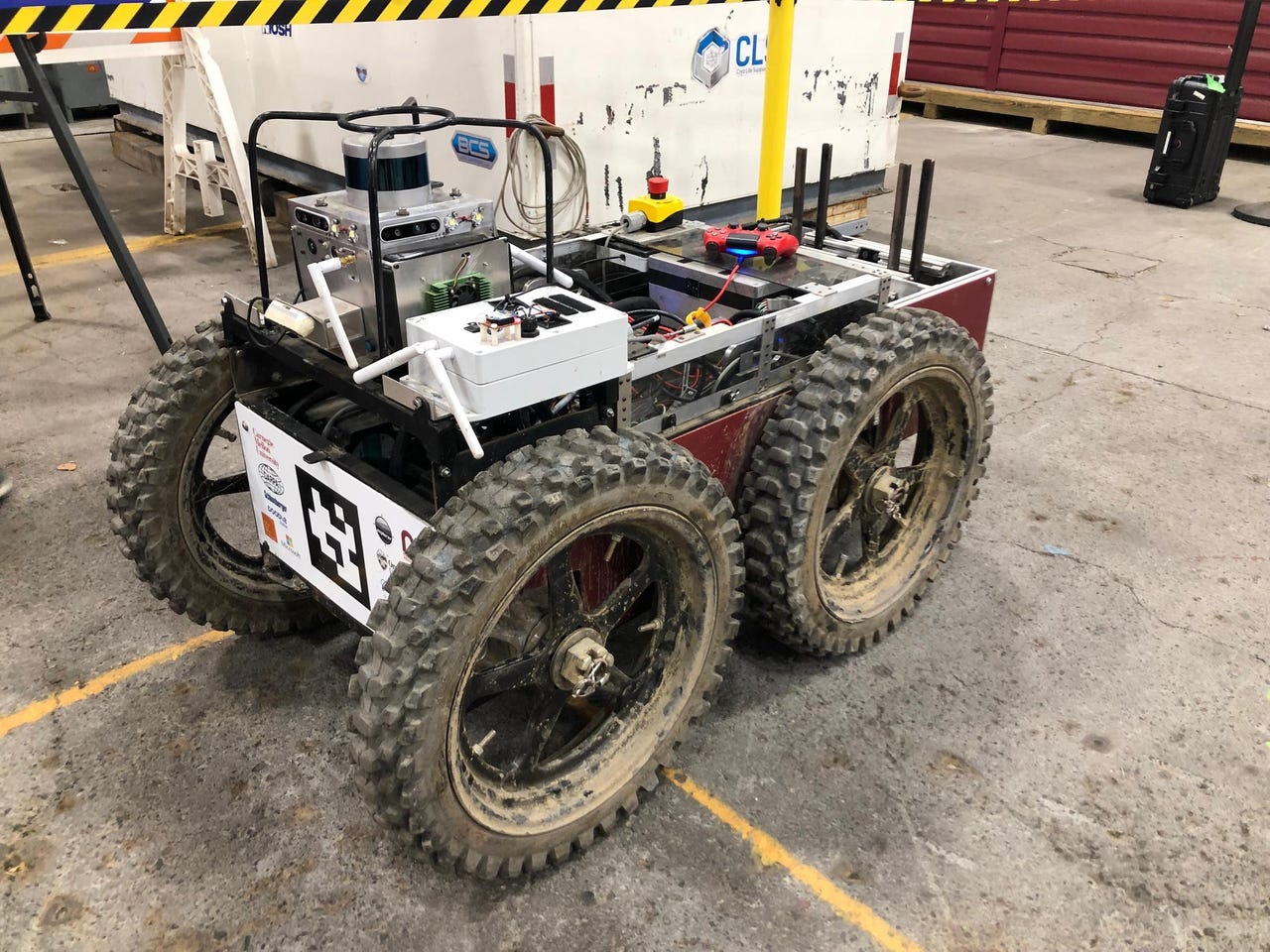Why send a 500-pound robot down stairs?


Rugged is the name of the game when it comes to military-grade robots. So it's no surprise that the latest autonomous machines from DARPA's Subterranean Challenge are extra tough.
Featured
The DARPA SubT, as it's affectionately called, takes robots to one of the most inhospitable, challenging environments imaginable: Underground. The challenge is designed to promote the development of next-gen war robots that can navigate and map underground tunnels and caves. The effort aligns with broader trends in robotics development toward systems that can be deployed in difficult-to-reach areas, including in infrastructure inspection, disaster relief, and mining.
I recently caught up with team Explorer, which includes researchers from Carnegie Mellon University and Oregon State University, one of 11 teams that will send robots into the depths of an incomplete nuclear power plant in a search-and-rescue scenario as part of the SubT. The robots must be ready to search multiple levels and open spaces within the plant to find artifacts including a backpack, a cellphone, and even a human survivor.
Explorer outscored the field during the first contest, the Tunnel Circuit, which took place in August 2019. The difficult thing about the SubT, however, is that one challenge is so different from the next.
"Searching across several levels and in a variety of spaces will require new equipment and even some new search tactics," said Matt Travers, who co-leads the team with Sebastian Scherer. "In a tunnel, the artifacts are all fairly close to where our robots are driving anyway. In a plant, we're less constrained, so finding things may be more difficult."
Stairways are also a big challenge.
"Stairs are right at the upper limit of what's possible with a wheeled vehicle," said Travers, a systems scientist at CMU's Robotics Institute.
Explorer operates two-wheeled robots that weigh nearly 500 pounds. That makes navigating stairs extremely difficult and fraught with complications. A third vehicle, weighing half as much but with the same power, has been added to the team's fleet because of its stair climbing capabilities.
Team Explorer also operates drones designed to work in close quarters.
"From the ground up, they've been designed to fly indoors," said Scherer, an associate research professor in the Robotics Institute. Each craft's four rotors, usually on the top corners of a drone, have been moved underneath and pushed closer together, so the drones are just 26 inches wide.
The drones also have been equipped with bumpers. Because they run out of power faster than ground vehicles, the drones will be carried on the backs of the wheeled robots until they need to be deployed.
Team Explorer is sponsored by Microsoft, Honeywell, Epson, the Richard King Mellon Foundation, and CNH Industrial.